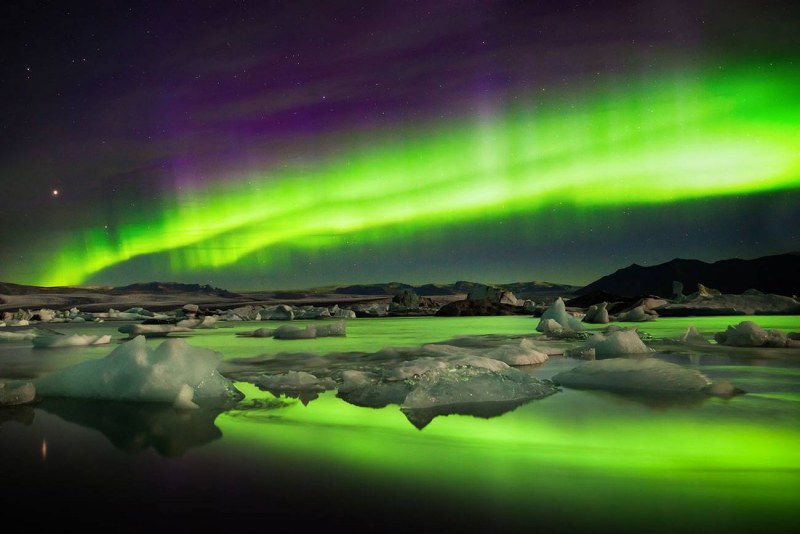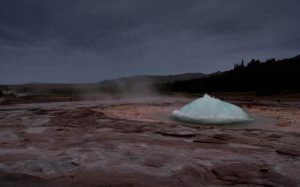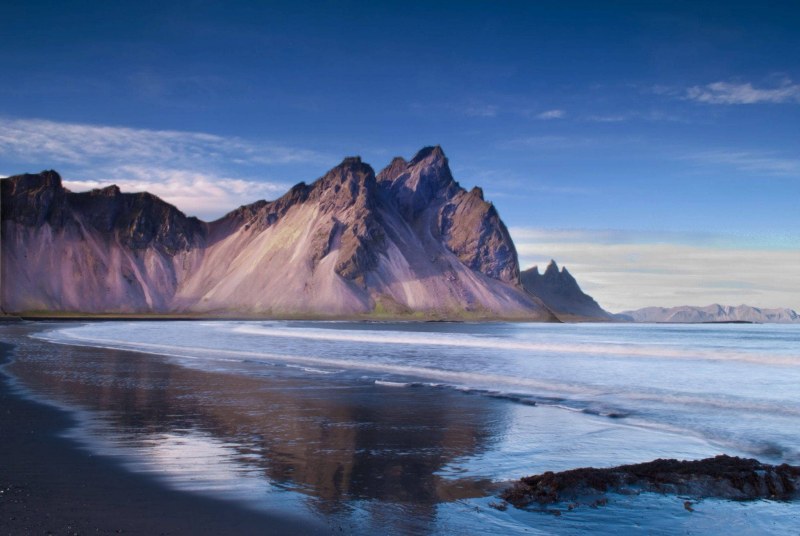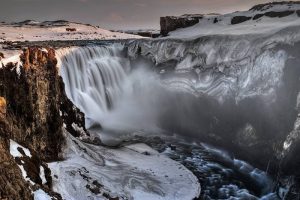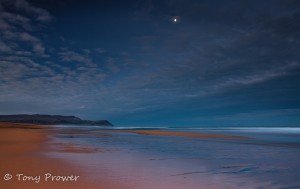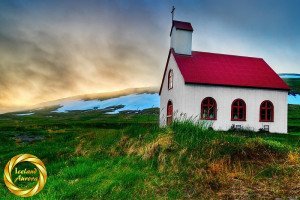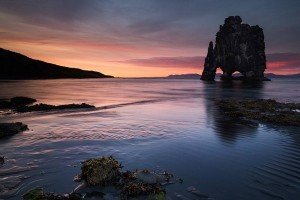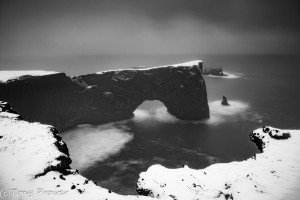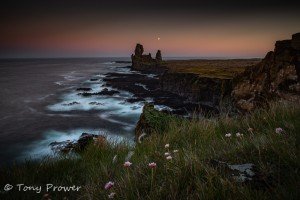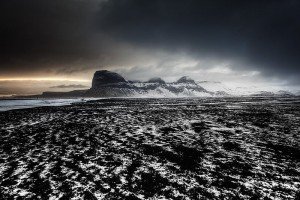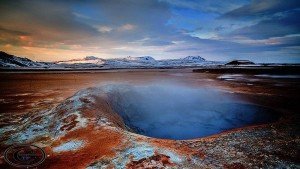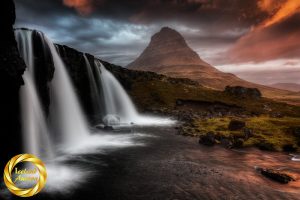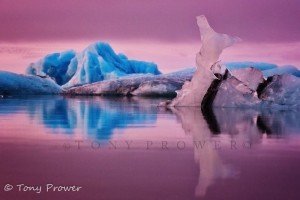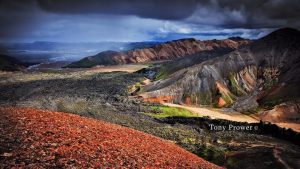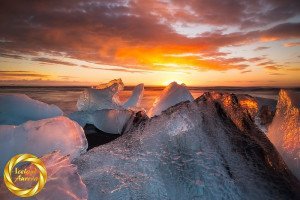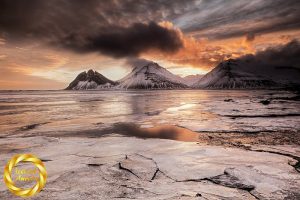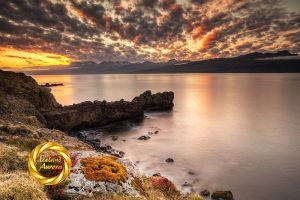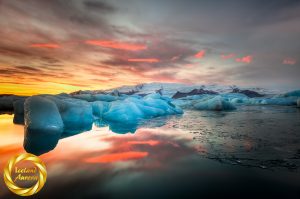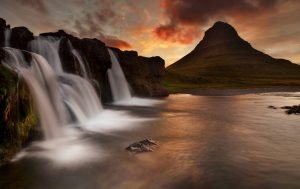This post documents a tour of the South and Central highlands and Glacier lagoons at Vatnjökull. The article is written by Ian Kostrzewski who is Tony Prower’s brother. Tony Prower’s Northern light picture, featured above, was captured on the trip. All other pictures are Ians.
Iceland Works.
Everything works in Iceland; I don’t mean services – although there is very little to complain about in that sense – I mean that everything works! This country is nature at its most raw, constantly updating itself, re-inventing itself; water shaping the rock, the rock itself creating new layers of land. Land which claims some of Europe’s most diverse of landscapes, and some of Europe’s pretty outstanding geographical records. The country is literally at work. It works.
There is a certain amount of infamy associated with Iceland mostly following the banking crisis in 2008 and the eruption in 2010 of the volcano that had newsreaders around the world chewing consonants like alphabet soup; and travellers and airline staff across Europe stranded where they were: – Eyjafjallajökull (although technically Eyjafjallajökull is the ice-cap that crowns the volcano rather than the volcano itself, the two have become somewhat synonymous.)
But there is so much more to Iceland than money and tourist trapping volcano.
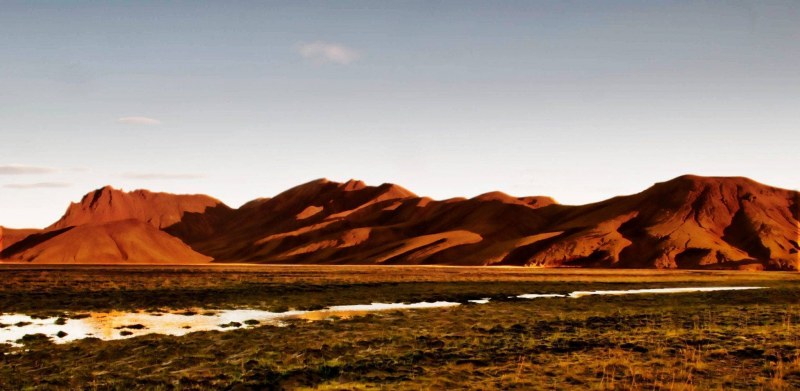
Pro-photographer Sessions
Late Summer
This custom tour took place in early September, in the last days of summer but with a definite autumnal zing in the air; temperatures barely scraped into double figures, and I found myself battling the wind on several occasions. Despite this however there were some seasonal days, golden sunlight and delicate shadows silhouetting the hulking ranges of mountains that are never out of view.
The tour was a photographic trip organised through Iceland Aurora, and taking in some of Iceland’s most stunning landscapes; Tony – the tour organiser – is renowned as a leader in his field and is happy to assist with advice on taking the best photo – composition, camera settings etc.; combine this with expert local knowledge, the trip gives you not just great photographs and memories but a real feel for the history and natural development of this tiny Island with so much to offer.
We start the tour on a grey Monday morning. Heading around what is known as the Golden circle. There is an anticipation of what I am about to discover as we head away from Reykjavik and into the hills beyond. Reykjavik is heated geo-thermally, (the water has a vague aroma of egg) and as we drive out of the city we start climbing towards the peak of the volcano that provides this energy.
Hidden Geology
You begin to appreciate that this country is, relatively speaking, so new; and as we drive on through this strangely twisted landscape, shapes appear through the mist. The volcano is still active and there is almost a feeling that a plume of hot lava may greet the eyes, and that this would be no bad thing. This becomes a regular emotion in this country; you want to see what is hidden, how much there is that maybe no-one will ever know, you wonder how it looked in the past, whether ancient creatures may have looked up at the strange lights in the sky, or watched as a glacier reveals it’s many-thousand year old secret.
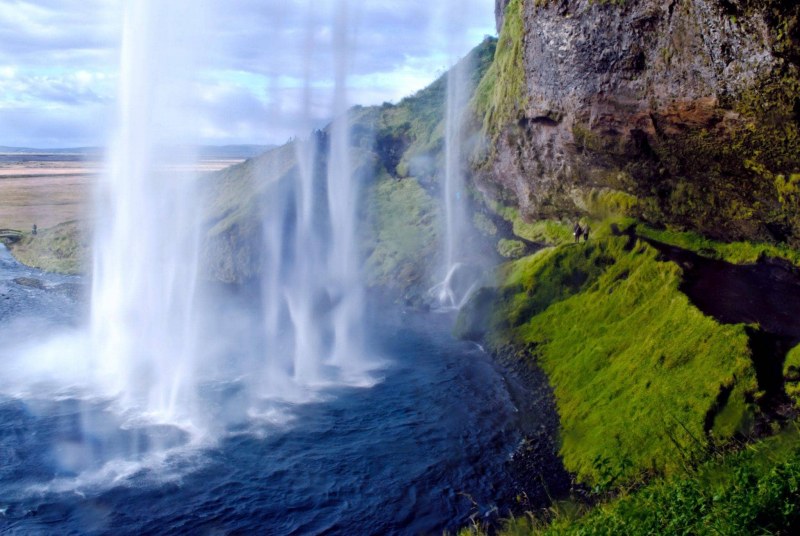
Oxararfoss Waterfall
Our first stop is Oxararfoss (Foss is a waterfall). It pours from the North Atlantic (American) plate to the west and onto the Eurasian plate to the east below. Over the ridge of the eastern-most plate, a path leads down to an inter-continental gully. Above you, neat and sturdy, is the North Atlantic plate, composed of straight edges and defined grey strata, this cliff face has an imperious look as it stretches out as far as you can see; to the other side, Europe has a more fluid, organic feel; a topsy-turvy creation meandering across the horizon.
At the end of a wooden path, behind a boulder ridden cliff face; the spray from the waterfall can be seen, at once motionless and sullen – phantom-like and ethereal, at once dancing in the ever changing light, forming flashes of the rainbow in the glistening drops.
The waterfall itself generates a resonant bass rumble as it tumbles fifty metres onto a ledge layered with huge rocks and then meanders down a second shallower slope, until it reaches the river bed and turns up through the rift. This noise and motion stirs something in the visitor, an urge to shout back, to dance, to somehow feel a part of this natural phenomenon.
The Golden Circle tour heads on to Geysir. Larger than Old Faithful and with the reputation as the world’s second largest geyser (even giving its name to the phenomenon), it breathes and sputters, steam building until the water level drops and finally a glass-blue dome appears at the vent, eventually bursting open in a violent burst of superheated steam and vapour.
The pattern repeats every few minutes so the perfect photograph is never far away – even in the rain. People wait breathless, cold fingers hovering over the shutter release. No matter how long people have stood there, the eruption can still catch visitors by surprise and is definitely a spectacle worth waiting to see again.
Gullfoss Waterfall
Heading north the tour leads to Gullfoss. Gullfoss is the largest waterfall in Europe and is apocalyptic in its scale. The waterfall is generated by a rift in the river channel and cascades into a deep gulch before resuming its path. It is no Niagara but is none-the-less breath-taking. A short stroll from either car-park will lead to spectacular viewpoints along the cliff face, from which to capture the end of the world atmosphere of this place. Different light and weather will give different shots of the same view so it is worth waiting for that subtle alteration to the clouds
Today is wet with a low, claustrophobic sky and the area is moody and cold, inhospitable almost. Dark clouds hang over the hills and the misty conditions make for some atmospheric photographs. The next day when we return the sun transforms the whole landscape, and whilst photos in this light can be tricky; Gullfoss this morning when compared to yesterday, reveals a phenomenal surprise. An arcing rainbow lingers in the air over the rift as the sun catches the spray – a sudden Hollywood creation in glorious Technicolor thundering in front of your eyes.
Kerlingarfjöll
Our first night was spent in a basic but clean and comfortable cabin; welcome warmth and a chance to unwind after a long day. The cabin bears much resemblance to what one imagines when one thinks of Saxons and Vikings, a sharply pointed roof with eaves extending to the ground. In groups of four, several small clusters of cabins are dotted around the hillside. The imagination is drawn to the days of the Sagas, cold nights spent around the fire telling tales of adventure, and discovery.
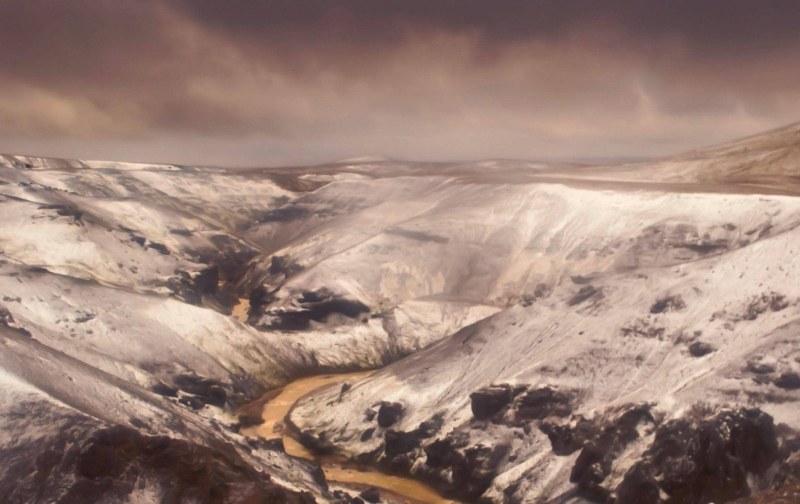
One of the tales involves the decision to choose between paganism and Christianity, at which two fires were blessed, one by pagan rites and one by a priest. Legend has it that a berserker army tried to attack both camps behind their fires – the Berserkers were able to penetrate the pagan fire but were unable to attack the Christian army behind their fire.
The Berserkers were Norse warriors whom legend would have it were fireproof. Drawing this myth using the symbolism of the volcano; they were named for the small volcanic hillocks that litter the fields and amongst these the first parliament was held in AD 860, and were held there until the mid-1800’s.
Arctic Cabins
Morning dawns and overnight the landscape is changed. A strong arctic wind has brought the snows and a fine dusting covers the hilltops like icing sugar. The day begins with a drive back down to the valley. As we descend the clouds begin to lift and the wind slows to a distant moan. By the time we have arrived back at Gullfoss, there is more a feeling of spring than winter in the air.
From Gullfoss, we head further towards the southern highlands. Today lenticular clouds scatter the blue above. This country is special in all lights, but each light offers something different; a new aspect over familiar landscapes perhaps. The sun catches folds in the rock and casts longs shadows over mountains and fresh, crisp snowfall.
The eye, as we travel through vast tracts of glacial deposits and volcanic lava fields, is drawn to the peaks of Eyjafjallajökull and Hekla – ever present reminders of the relative newness of this land and that you are travelling through its adolescence.
The landscape of lava fields is lunar, the ground although essentially flat, is heavy black from the ash that forms the dust and sand and peppered with arcing twisted rock forms in clusters or scattered like. This ground once hot and moving, creating new earth where it cooled, presided over by huge boulders stood like ever cooling sentinels guarding the wilderness.
We checked into our accommodation, again clean and basic but functional, and headed out to catch the early evening sun. This stretch was largely off road up into the mountains, lurching over rocks and through puddles to reach base camp. It is a short hike up the hillside to reach a vantage point overlooking the flat valley below through which the silver ribbon of a snaking river tumbles.
The sun setting behind us casts a light on the red mountains on the horizon and the valley is reminiscent of Arizona. The sky is wide and blue, dotted with clouds which pick up the hues from the sinking sun. Our thoughts turn to whether we will see the famous Aurora tonight, and as we drive, keen eyes monitor the clouds on the horizon, willing them to wait a few more hours before they close in.
However after a meal and change of clothes a few abortive test shots showed that although there was distinct activity, the cloud had moved in and we were unlikely to get a good show tonight. Disappointing but an early night would give us a good start the next day.
Iceland, despite being a relatively small landmass, is blessed with a low population density; this means that the natural beauty can be maintained without the need for large cities. Instead, myriad small farmsteads dot the countryside, and small towns are few and far between. It is wise to plan ahead for refreshments, although many of the communities have rest stops.
It is not a million miles away from the historical settlement of Iceland. Now of course distances can be covered by car rather than horse, although many still uphold the tradition of horse riding here and many visitors enjoy hacking across the terrain. This trip has too much already packed into it for us to find the time for hacking and regretfully that is something I will have to leave until another trip.
Guest-house Hali
Our accommodation for the next three days is the Guest house Hali, which nestles under a craggy outcrop with the Atlantic a single distant line on the horizon. On our way, we climb through a range of peaks, sadly again a sheet of mist hits the land, hugging the jagged edges of the cliffs, spotting rain on the windscreen, obscuring the view outside. We had a few stops however to view long narrow valleys, and waterfalls. Rocks hewn by the weather and by the movement of the earth loom out of the murk. It is a wild land and we are just passing through. Finally reaching Hali in the early afternoon, we are provided with a comfortable base for travelling out into the national park.
The Vatnajökull national park covers the glacier which can be seen on the horizon and is the largest sheet of ice in Europe, covering over 12,000 square kilometres. The glacier itself is an ever present force, visible from all directions. The scale of this ice sheet is awe inspiring and in places the surface is covered with layers of centuries old ash and dust.
Locals will say that they have seen the ice retreat at a vastly increased rate over the last few years and there is now dry ground visible which no one alive today has ever seen. It is a privilege to be some the first eyes to see the uncovering of new land to be explored whilst being a visible reminder of the fragility of our surroundings. This is a feeling that starts as a seed when you arrive here and germinates within you as each day brings a new cognisance of the earth.
Our continuing tour takes us to Jökulsárlón (literally “glacial river lagoon”) It is vast, over 240m deep in places and covering 18km² The lagoon narrows to form a river which drains into the ocean to the south, and huge, creaking icebergs drift towards the sea, breaking up and crashing into the cold waters, at once graceful, at once fragile and at once a reminder of the destructive power this sleeping giant contains – if all the energy in the glacier was released at once the result would be apocalyptic.
As it is, even a small amount of this glacier’s energy can be devastating. On a visit to the Skaftafell national park, lying under the forbidding icy peak of Iceland’s highest mountain – Hvannadalshnúkur; today stark white against a bright blue sky – we paid a visit to the museum to hear about the Gjalp sub-glacial eruption of 1996.
Thousands of tons of ice, ash and detritus quickly over spilled into the valleys below, decimating everything in its path – a curious fact about Iceland is that all of the bridges are transient, able to be replaced quickly under such conditions. Iceland’s main road network runs from the ring road that circles the whole country; knowing the devastating power of the natural environment, and how quickly services can be cut off, it is a highly practical solution to a problem most of us will never face.
Jökulsárlón
As we try to sum up the essence of Iceland through the lens, it becomes clear through several visits that Jökulsárlón has the ability to change its personality – sometimes due to the weather; sometimes the time of day and always because the icebergs change and shift. If you listen carefully you may be fortunate enough to hear the crashing into the water of building sized blocks of ice, carving from the glacier’s edge some distance away. If nothing else the constant creaking of the ice, the splashes as blocks break up, and the waves caused by ice-floes gently lapping at the shore, driven onwards by the wind.
Apart from birds, wildlife is rare in Iceland so it was a fortunate experience to see seals gambolling amongst the icebergs. Obviously very used to people they would splash and grunt and calling out to them gave them a real opportunity to show off.
I feel it important to make a note here about the weather. This time of year (September) it is erratic. As I have detailed, we have seen rain, mist, wind, sun, cloud and snow. As if the seasons are still determining whose turn it is. You can experience winter and summer in the same day, spring and autumn in the space of an hour. This is what makes Iceland so dynamic and so exciting; and Jökulsárlón (perhaps the windiest place on earth) is no exception.
Even with the wind, this place has a calm, almost meditative feel. A short walk along the beach, takes you away from the bustle of the café and the people. You can find a place to close your eyes and listen to the ice. Listen to the water; listen to the past and the future.
Arctic Char
The evening was spent at the guesthouse with the need for an early night. Whilst getting your tongue round the language can be tricky, getting your tongue around fresh lamb and locally caught arctic char at the restaurant here is much more palatable and a very pleasant way to spend the evening. A generous welcome is given by the staff, with beer and whiskies available to sooth a tired palate.
The forecast was for a clear sky all day the next day, and that meant a sunrise shoot. This would be the start of the longest day of the trip; we rose at 5.30 a.m. and bundled down to the beach at Jökulsárlón. Black sand, fine and spotted with pumice stone stretched for miles with the wind lashed ocean beating against it; heart-like, in a never ceasing rhythm. Despite my general apathy toward early mornings it was definitely worth getting up to capture this ethereal light. Subtle hints of red and orange, masked with spun gold hues shining upwards onto the cloud.
There was a break after lunch, a little time to reflect and prepare for an intense evening and night shoot. I found myself wandering some way up the mountain and finding a hollow, ringed with stones that had perhaps once been a shepherd’s shelter or a poets retreat. Although now open to the sky, it offered me a comfortable space, out of the wind, with the warm sun on my face. I read a local tale for a while until I drifted off to calm and peaceful slumber.
Our sunset shoot, took us a good 60 km or so out to the shore past Hofn. Here lies the south eastern edge of the national park and an island key called Krókalátur, affording views of a bay with calm waves so much different to this morning’s stormy sea. The sun darted in and out of cover and the distant hills and the bright blue of the sea were lit gold and red, light creating textures where before there had been only shadows, highlighting the stubborn plants that cling to the black dunes in yellows and greens. The waves left a sheen on the sand reflecting the mountains behind. To catch the dying embers of the day, the road back took us high onto the glacier, past lakes high above the cloud line, tumbling brooks formed deep under the ice, gently carving deep canyons in the rock.
Pea Souper
The clear skies meant that we had a good chance of seeing the lights tonight, so leaving at 11 p.m. we drove back to Jökulsárlón. Setting our camera’s on the opposite (north facing) beach of the lagoon we peered desperately at the horizon. Although the cameras could pick out something, the sky was more like “pea soup”, faintly green but never quite delivering the promise.
Following a sound night’s sleep after a mammoth day, we headed out to Skaftafell. After a twenty minute hike, we were greeted by a waterfall that fell over a cliff-face of blocks of lava solidified and haphazardly creating a Lego-like wall. A reminder again of how this now solid ground had not been here when the dinosaurs walked the earth, and had been thrown up by the colossal shifting of rock and time.
As we drove along the southern edge of the glacier, various tongues of ice could be seen pouring over the mountains, carving new valleys and ravines as it slowly drips forward. There were plenty of lagoons to visit; some, where a rocky path leads along a ridge. Below the train-like nose of the glacier could be seen, giant crevasse spread out as far as the eye could see, blue in places, ash covered in others, and in hollows on the ice, new pools formed ready to burst over into the lagoon. It is hard to judge the scale of this monster until you can see the vague outline of walkers, so small against the cold white wilderness.
Glacier Lagoons
Each lagoon has its own character and tells a different story, each captures some of the mysterious and secretive nature of Iceland. Daring you to hear what it has to say. It is older than we are, relic of an age of ice covering most of the northern hemisphere. Wiser perhaps than we, slower, colder and ponderous it breathes, enslaving the fires of the earth in sleep beneath it.
This is the night. Clear as a bell as the sun dips low and journeys out of sight. Pinpricks of familiar stars begin to flicker, the moon, red and sulky in the dying light begins a horizon hugging arc across the sky to the south. Stepping from the guesthouse for a breath of fresh air, a glance to the north and there were the faintest green spikes projecting far across the sky.
Back to Jökulsárlón again and repositioned in the same positions, cameras poised aimed at the silhouettes of the glacier just as the sky rippled with ribbons of yellow. All around us the sky was illuminating the ice below. I will never be able to do justice to this display of the Aurora. It is a personal experience and I am sure that everybody will find it hard to express their feelings. It is spiritual, mesmeric and leads the mind to the primal howl of the universe.
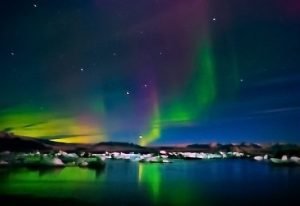
It is like a fire in the heavens, it is peacefulness and it is awareness of your place in the universe. The seals seemed to share this excitement, slapping their flippers against the still waters, diving from the bergs, and snorting as they surfaced for air. There was no better place to be than right here, right now, alone except for the seals, the ice and the lights, with the realisation of your small place in this great big universe.
Iceland Aurora
Eventually however, the cold nips at the fingers, and the show eases to a gentle green glow in the sky, and with hearts pumping we headed back to get some much needed rest.
Our final day started reasonably with a last clear out of the suitcase and a slight dip in the spirits as we headed back along the coast toward Reykjavik. No more stops at Jökulsárlón we turned around the great glacier, where tongues of blue pitted ice flowed through gaps in the mountains like time itself; slow and meandering yet strong and constant.
I suppose there could be many epithets attached to Iceland; the young country, land of fire and ice, the lonely land, but I would name it “The land of the Foss”. There are so many spectacular waterfalls in all shapes and guises, carving the already undulating land into new form, creating a country that will still be changing through time.
This leg of the journey took us to three new waterfalls including Skógafoss and Seljalandsfoss. At each the sun created a lightshow through the mist to parallel the lights of the night before. Skógafoss in particular, a huge cacophony as melt water from Eyjafjallajökull and Mýrdalsjökull meet and fall down over a huge rift on their perilous journey to the sea. The weather was perfect, small clouds drifted over the fall and rainbows danced, echoing themselves time and time again in the mist.
Behind the Waterfall
Seljalandsfoss equally has its own pleasures. Donning waterproofs is a sound move here as a treacherous path leads behind the fall, the flattened pastures shining in the sun beyond, hazy but bright. It is difficult to capture this spectacle photographically, as the droplets of water, lingering for a second fall on the lens, on the eyes and into the soul.
South of Eyjafjallajökull a town stop at Vik for refreshments follows a trip back in time. Forget what you thought you knew about lava fields, Iceland boasts the largest lava field in Europe; the boiling landscape stretches as far as the eye can see in every direction. Once hot and molten, now cool and covered in a distinctive silver moss that lets you sink ankle deep to the rock below. Maybe another few thousand years will have obliterated this landscape, but for now there is the privilege of another claim to fame.
Vik is a Norse word for town and reputedly where the word Viking comes from. Vik itself is a small town but well appointed, overshadowed by a glowering cliff face; a trip around which leads to a secluded beach with stunning views in every direction of wind carved crags and towering natural monoliths. The sand beneath your feet is black and fine, sparkling and shimmering as the sun hits it.
A long drive is ended as Reykjavik hoves into view, and this is the end then. Ready for food and the city lights, there is still a sadness to be at the conclusion of this journey into the Earth.
I don’t think that this is the end; this is the beginning of a love affair. This adventure has only scraped the surface of this small but infinite country; we have travelled along the south coast, up into the highlands and down through the lowlands. Cross mighty slumbering ice-giants and over deep canyons. Past deafening silence and quiet disorder, I wonder what else there is to see.
There is the north to visit – vast areas of wilderness still lying in wait for exploration. There is white water rafting and Ice-caving where your hand can scrape millennia old soot from the underside of the glacier. There is the midnight sun; there is the snow chilled winter. There are horses to hack along boulder strewn fields and there is discovery of the planet, of the forces that shape it and shape us.
And I realise now that I haven’t mentioned Reykjavik itself.
Visit the Blue Lagoon, deep turquoise water to bathe in, heated by the springs and set against the lava, or the open air swimming pools, water hotter than the hottest bath, bubbles to massage the stress away. Take in whale watching tours, harbour views and the observatory; and delve into the city through its many shops, bars and restaurants – ensuring that you try the ice-cream whenever possible.
Will I come back? Yes, again and again and again. This is no place for the beach-bum holiday maker in you; it is a country for the explorer, the adventurer. Days can be long travelling between these sights, so a certain resilience to the road is essential (as well as a certain resilience to the wallet). But if you have a thirst for sheer natural wonder, it will appeal to the scientist and the spiritualist in you at the same time
Here you can find solitude and peace amongst the turmoil. Here you can find a culture shaped by its environment. Here you can find life working. Iceland is beautiful and terrifying, Iceland is peace and earth-shattering noise. It is a country of contradictions and of order. It is everything about our planet in a small piece of land thrown up by untameable forces. Iceland works.
